Table of Contents
Resolving the Cylinder One Misfire Code in a Mercedes-Benz E Class W212 with the M272 Engine
Engine misfires are among the most common and frustrating issues in modern vehicles. For Mercedes-Benz owners, the Cylinder One Misfire Code (P0301) often raises concern because it can cause rough idling, hesitation, reduced power, and increased fuel consumption. If left untreated, it can even damage critical components such as the catalytic converter or ignition system.
In this case study, we’ll focus on a Mercedes-Benz E Class W212 equipped with the M272 Engine, showing how a systematic diagnostic process identified the problem and how a faulty spark plug was replaced to resolve it. You’ll also learn about symptoms, diagnostic techniques, repair steps, spark plug maintenance, and prevention tips.

Symptoms of Cylinder One Misfire (P0301)
When fault code P0301 is triggered, the following symptoms may appear:
- – Rough idling or engine hesitation.
- – Noticeable loss of power during acceleration.
- – Reduced fuel efficiency.
- – Check Engine Light (CEL) illuminated on the dashboard.
- – Vibrations, especially at low RPM.
These symptoms not only reduce driving comfort but also risk long-term engine damage if ignored.
Diagnostic Approach: Step-by-Step
1. Scanning for Fault Codes
Using the Mercedes-Benz diagnostic tool (Xentry), the technician retrieved code P0301 – Cylinder One Misfire. This provided a starting point but not the root cause.
2. Visual Inspection of Cylinder One
A quick visual inspection was carried out:
- – Checked for loose wiring connectors.
- – Looked for visible ignition coil damage.
- – Examined nearby components for oil or debris.
No obvious external issues were found.
3. Wave Pattern Analysis
To dive deeper, an oscilloscope test was performed to analyze ignition waveforms. This method provides insight into spark plug firing patterns and coil performance.
- – Finding: Cylinder one showed an irregular wave pattern compared to other cylinders.
- – Conclusion: Spark plug was the likely culprit.
4. Confirming the Faulty Spark Plug
Cylinder one’s spark plug was removed and examined. The electrode showed wear and carbon deposits, confirming it could no longer deliver a strong, consistent spark.
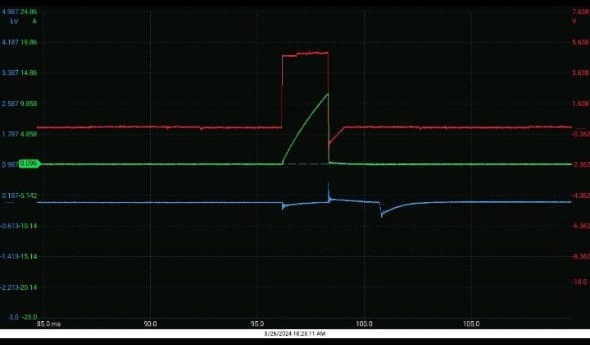
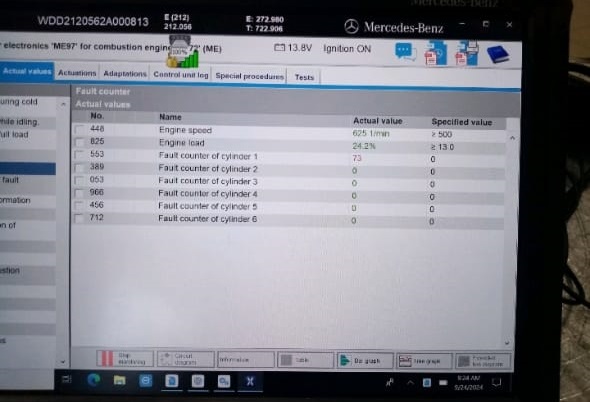
Repair Process: Fixing Cylinder One Misfire
Step 1: Replacing the Faulty Spark Plug
- – The defective spark plug was replaced with a new OEM-spec spark plug.
- – Proper gapping was ensured for optimal combustion.
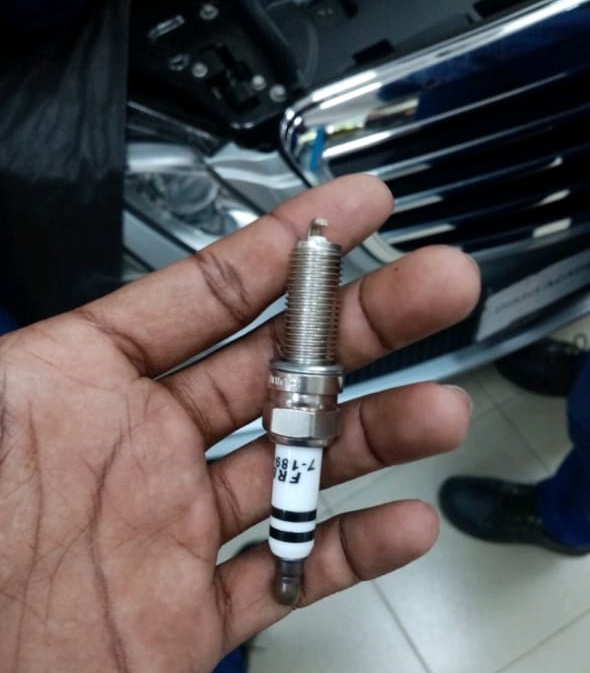

Step 2: Inspecting the Ignition Coil and Wiring
- – The ignition coil was tested and found functional.
- – The coil and wiring were cleaned to prevent future issues.
Step 3: Clearing the Fault Code
- – The diagnostic tool was used to erase stored fault codes.
- – The ECU (engine control unit) was reset.
Step 4: Test Driving the Vehicle
- – The car was test-driven under various conditions.
- – Engine performance returned to normal.
- – No new codes were logged in the ME control unit.
Result: The P0301 Cylinder One Misfire was successfully resolved.

Symptom – Cause – Fix Table
| Symptom | Likely Cause | Fix |
|---|---|---|
| Rough idle, CEL on | Faulty spark plug | Replace spark plug with OEM part |
| Misfire in one cylinder only | Weak ignition coil | Test coil, replace if necessary |
| Intermittent misfire | Wiring/connector issue | Inspect wiring, clean connectors |
| Misfire under load | Fuel injector clog | Clean or replace injector |
| Persistent misfire after repairs | Low compression | Perform compression/leak-down test |
Explore More Mercedes Engine Misfire Issues
For a deeper dive into all misfire-related problems, visit our hub page: Mercedes Engine Misfire Issues – Causes and Fixes. You’ll find grouped case studies, step-by-step diagnostics, symptom–cause–fix tables, and prevention tips to help you resolve misfire problems quickly and effectively.
Preventive Measures Against Misfire
To avoid recurrence of P0301 misfire codes, follow these practices:
- 1. Replace Spark Plugs on Schedule: Mercedes recommends spark plug replacement every 60,000 miles or 4–5 years for the M272 engine.
- 2. Inspect Ignition Coils Regularly: Coils degrade over time; replace in sets if several fail close together.
- 3. Use Quality Fuel and Oil: Poor fuel can lead to deposits that shorten spark plug lifespan.
- 4. Check Wiring and Connectors: Prevent corrosion and ensure tight connections.
- 5. Run Periodic Diagnostics: Catch small misfires early with OBD-II scans.
How Often Should You Change Spark Plugs?
1. Spark Plug Types and Lifespan
- Copper Spark Plugs: 20,000–30,000 miles.
- Platinum Spark Plugs: 60,000–100,000 miles.
- Iridium Spark Plugs: Up to 100,000 miles.
- Double Platinum / Iridium-Platinum: Often last beyond 100,000 miles, suitable for engines like the Mercedes M272.
2. Signs Spark Plugs Need Replacement
- Engine misfire or hesitation.
- Drop in fuel economy.
- Hard starting.
- CEL triggered by ignition-related fault codes.
- Visible electrode wear or carbon deposits.
3. Importance of Regular Spark Plug Maintenance
- Fuel Efficiency: Healthy plugs ensure complete combustion.
- Engine Performance: Smooth power delivery and idle stability.
- Emission Control: Prevents unburned fuel from damaging catalytic converters.
- Cost Savings: Avoids expensive repairs linked to misfire damage.
4. Mercedes-Benz E Class W212 Recommendations
For the M272 engine, Mercedes typically recommends spark plug replacement every 60,000 miles (96,000 km). Always confirm with the owner’s manual or service guide for exact intervals.
Pro Tip: Inspect plugs during every major service. If fouling or wear is visible, replace immediately—even before scheduled intervals.
FAQs About Cylinder One Misfire in Mercedes
Q1: What causes code P0301 in a Mercedes-Benz?
The most common causes are worn spark plugs, faulty ignition coils, fuel injector issues, or wiring faults.
Q2: Can I keep driving with a misfire code?
It’s not advisable. Driving with a misfire can damage the catalytic converter and reduce engine life.
Q3: How much does it cost to fix a cylinder one misfire?
Replacing a single spark plug may cost €100–€200, while ignition coil replacement can cost €200–€400. Injector repairs are usually higher.
Q4: How can I tell if it’s the spark plug or ignition coil?
Waveform analysis or swapping coils/plugs between cylinders helps isolate the faulty component.
Q5: How often should I replace spark plugs in the Mercedes W212 M272?
Every 60,000 miles or 4–5 years, though earlier replacement may be necessary under severe driving conditions.
Conclusion
The Cylinder One Misfire Code (P0301) in a Mercedes-Benz E Class W212 with the M272 engine was resolved by diagnosing and replacing a faulty spark plug. Using advanced tools like waveform analysis, the exact fault was pinpointed quickly and effectively.
This case highlights the importance of:
- – Systematic diagnostics.
- – Following manufacturer spark plug replacement intervals.
- – Performing preventive maintenance to avoid costly repairs.
By keeping up with regular spark plug inspections and addressing misfire codes promptly, Mercedes owners can maintain smooth performance, fuel efficiency, and long-term engine health.
Author
Written by: Mercedes Expert
Automotive Technical Trainer & Mercedes-Benz Diagnostic Specialist
With years of hands-on experience repairing and diagnosing Mercedes-Benz vehicles, specializes in case-study-based troubleshooting guides that blend workshop accuracy with educational clarity.
Last Updated: September 2025

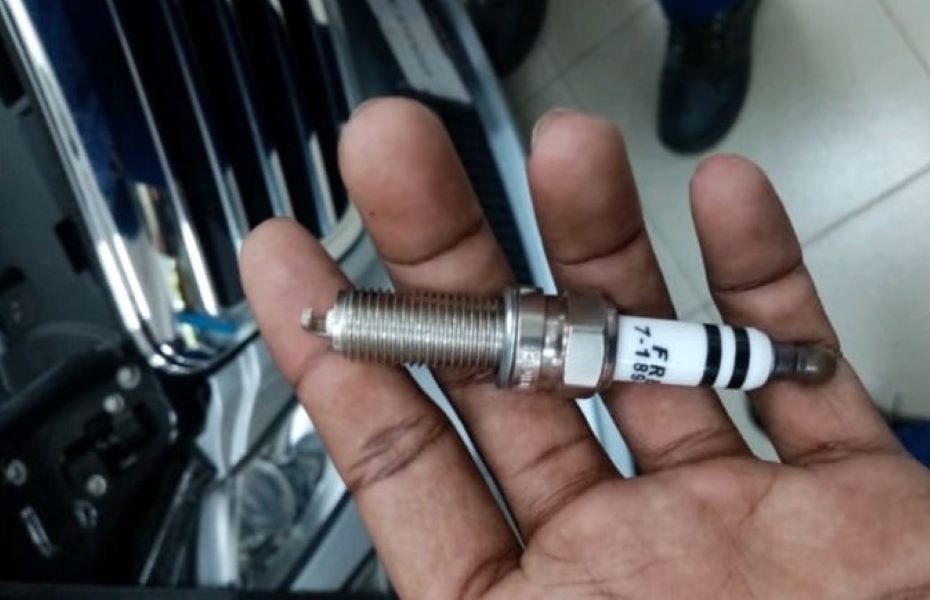
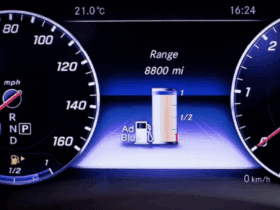
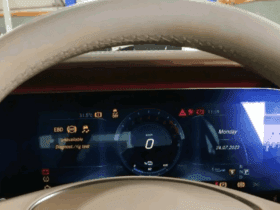
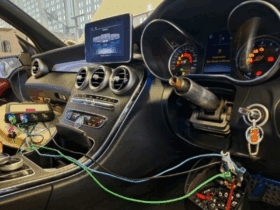

Leave a Reply